Nuclear fallout shelter signs being removed around the city
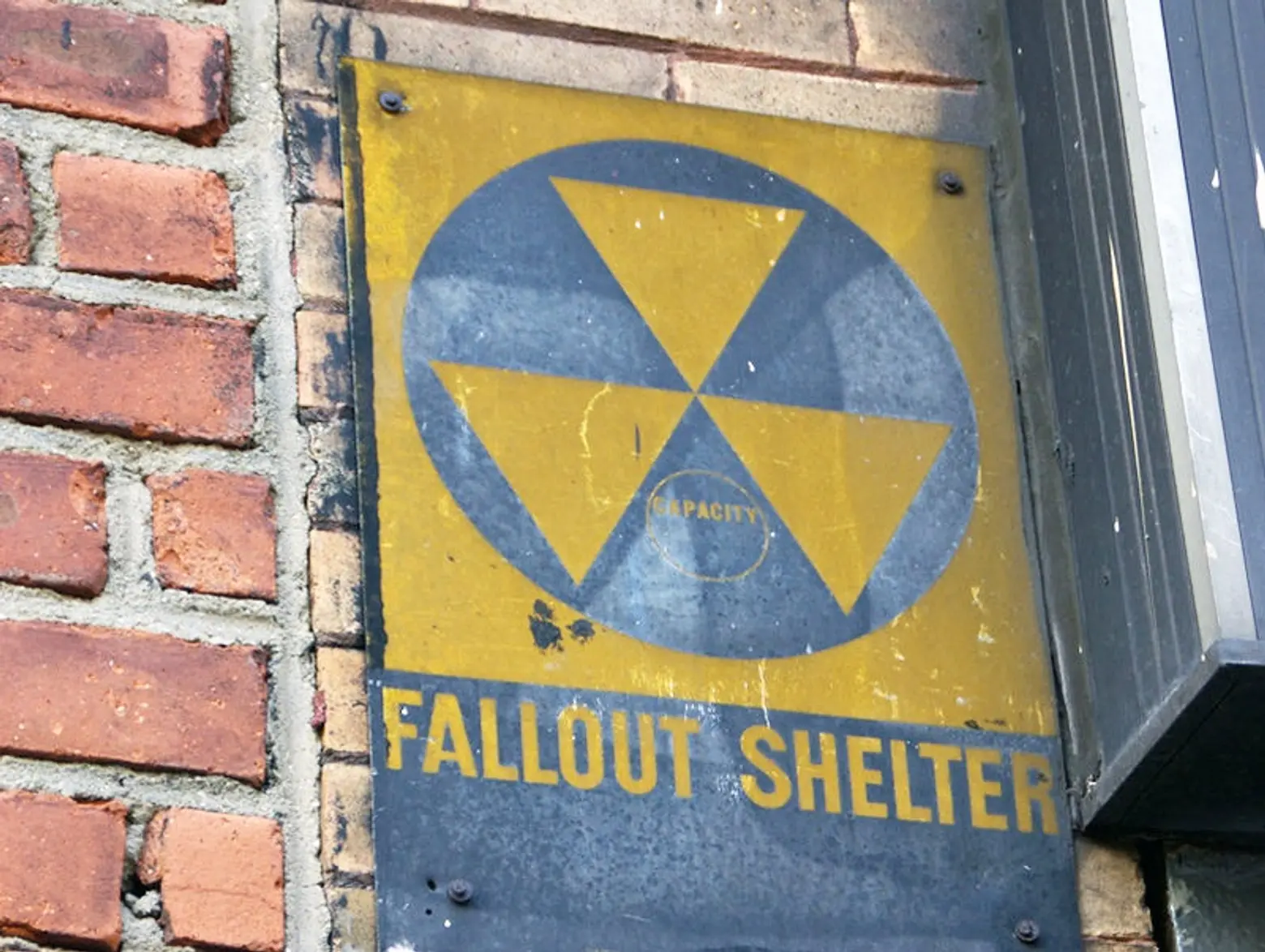
Photo via Wiki Commons
New York City has started taking down the yellow nuclear fallout shelter signs slapped on thousands of buildings across the city in the 1960s. According to AM New York, city officials believe these metal black-and-yellow signs “are misleading Cold War relics that no longer denote functional shelters.” But back in the ’60s, they were considered emblematic of the era. President John F. Kennedy created a shelter program in 1961 across U.S. cities as anxieties grew high over the nuclear arms race between the United States and the former Soviet Union. By 1963, an estimated 18,000 shelters had been designated across the five boroughs, and the Department of Defense had plans to add another 34,000 shelters citywide. Most were no more than basements marked by an official government sign–and now the remnants of such signs are coming down.
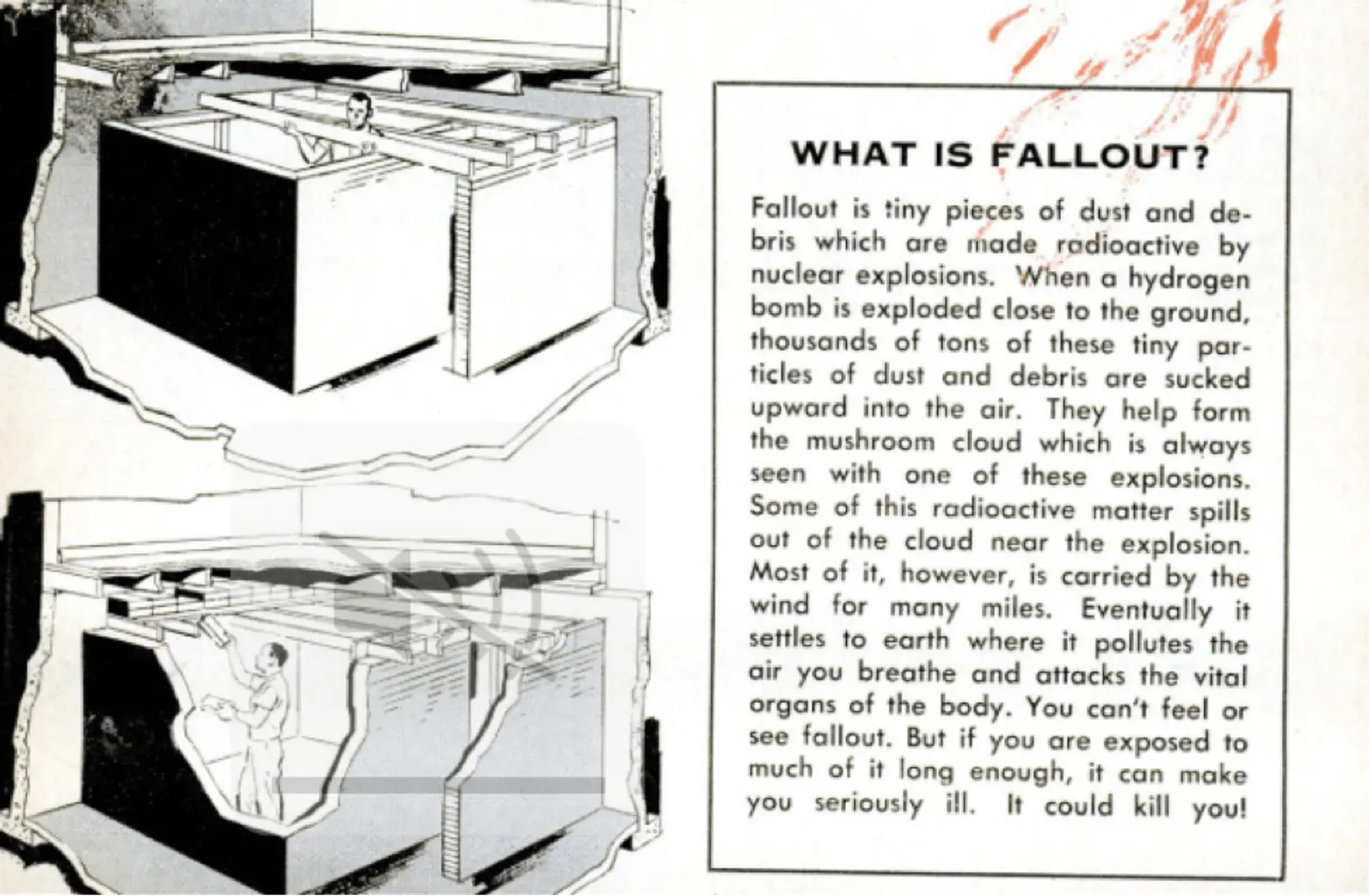 An October 1960 feature in Popular Mechanics provided educational advice on fallout and how to avoid it.
An October 1960 feature in Popular Mechanics provided educational advice on fallout and how to avoid it.
Shelters were envisioned as protection in the aftermath of a nearby nuclear explosion and were marked by the federal government’s Office of Civil Defense. Maintenance of the system even entailed federal funding to stock shelters with food and water.
Most of New York’s shelters were known as “community shelters.” Inspector guidelines only indicated that “community shelters” be kept free of trash and debris, with a ventilation system providing a “safe and tolerable environment for a specified shelter occupancy time.” While some were equipped with emergency supplies, others were considered too hazardous to enter, filled with leaking raw sewage, garbage, and rats. Then there was a small percentage of shelters designed as fortified underground bunkers, stocked with emergency supplies. However, these were rare and primarily built for high-ranking government officials.
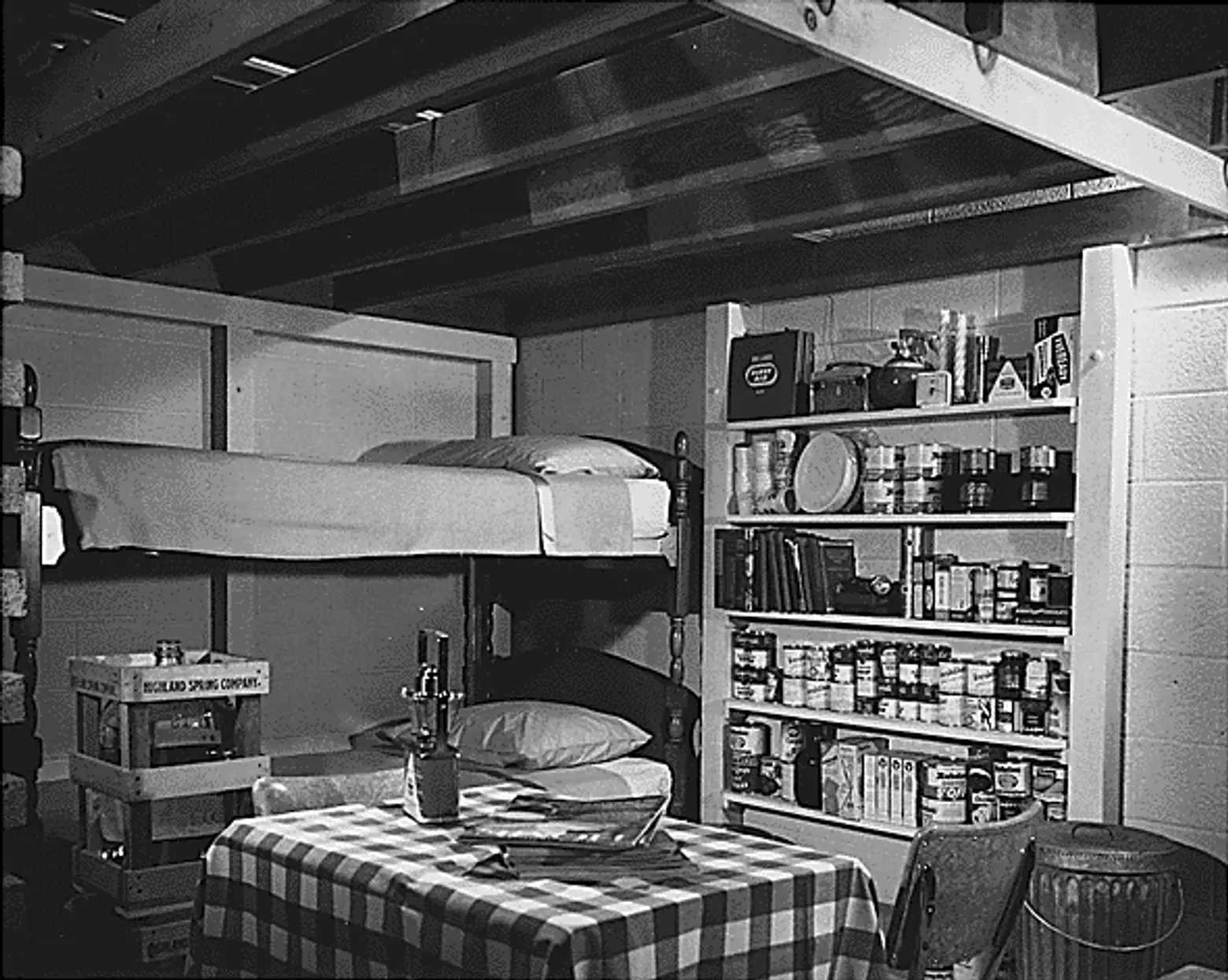 Idealized American fallout shelter, around 1957, via Wiki Commons
Idealized American fallout shelter, around 1957, via Wiki Commons
We now know that in the event of a nuclear attack, most fallout shelters would have done little or nothing to protect residents from the fallout. Funding to stock the shelters ended decades ago, and by the ’70s most in New York were cleaned out and converted into storage, laundry, or fitness rooms.
Though tens of thousands of the signs have vanished as old buildings have been renovated or demolished, it’s unclear how many still remain, and city officials say this is the first coordinated effort to remove them. The takedown is being spearheaded by the city’s Department of Education, as a number of public school buildings still display fallout signage. A spokesman confirmed that any designated fallout shelters created in the city’s schools are no longer active, and the department is aiming to remove them all by the beginning of this year.
Though some see the signs as a historical marker, others believe it’ll lessen any confusion if a disaster were to happen. And if you’re wondering where to go in the case of a disaster now that New York’s fallout signs will soon be few and far between… AM New York says “those far enough from the blast center to survive would do well to head to the lower interiors of any standard residential or commercial building, ideally a windowless basement, to shelter from radioactive particles outside.”
[Via AM New York]
RELATED:
Get Insider Updates with Our Newsletter!
Leave a reply
Your email address will not be published.
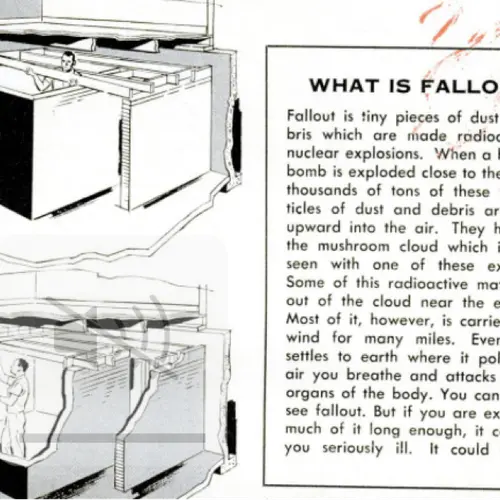
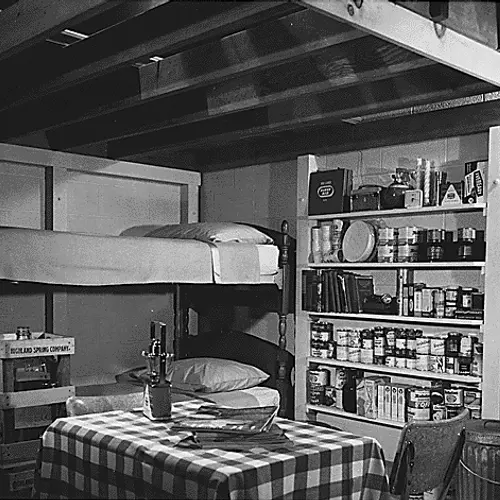
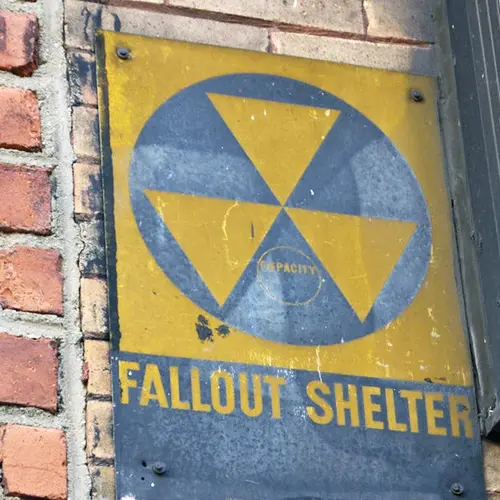

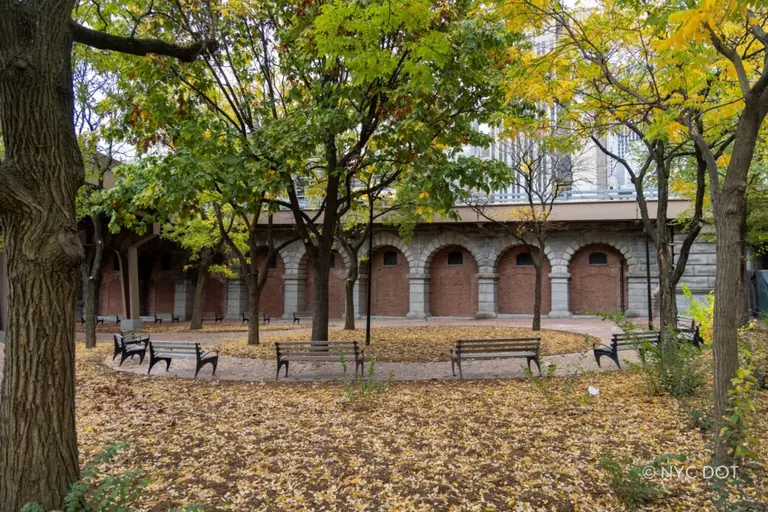
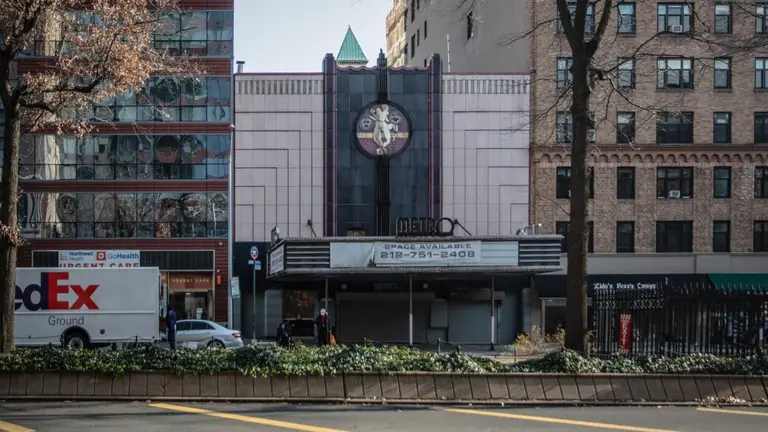


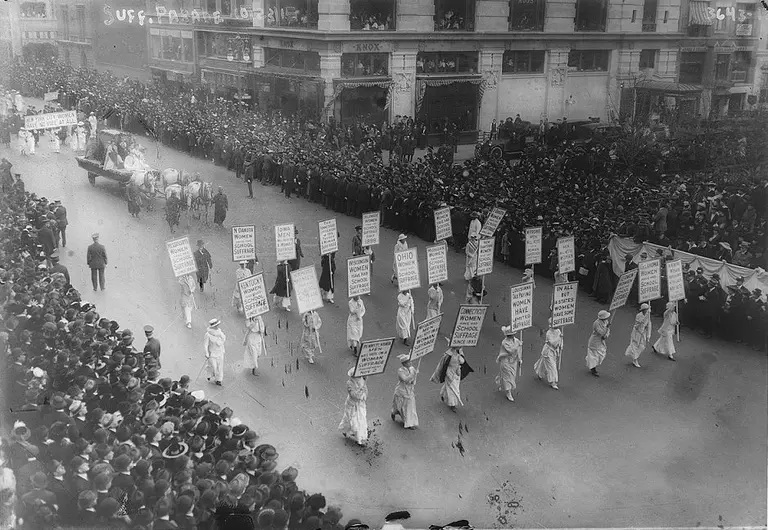





















Any information on if they’re available for sale after removal?
They are all over my building in the Bronx. Leave them. We need to be reminded daily of what jerks we are.
Back in the 70s, when I was a lot less well off, I lived for a couple of months on the survival crackers I got in an enormous hermetically sealed metal box, from the decommissioned shelter area in my apartment building.
Earlier, in the 1950s, everyone in Michigan received these tags, with your blood type on them:
https://uploads.disquscdn.com/images/968937927437f83664f4194886b2fe9dbc99009ceec2f39b4f739451cde8cda0.jpg